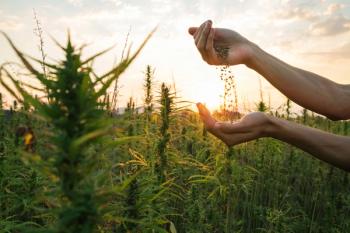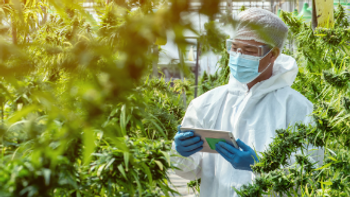
Cannabis Science and Technology
- March 2022
- Volume 5
- Issue 2
- Pages: 46
Five Factors to Inform a Well-Grounded Growing Media Decision
The choice of growing media can contribute to precision, consistency, and repeatability from plant to plant and harvest to harvest. Here, we consider five factors that should be evaluated to help make the best choice of growing media.
Choosing a growing media might seem like a “one and done” decision. As with many aspects of horticulture, today’s growing environment is evolving. Supply chain dynamics and the labor market are just a few challenges prompting growers to rethink various aspects of their business—including the choice of growing media.
As the literal “ground floor” for successful cultivation, growing media influences how plants access air, water, and nutrients. The choice of growing media can contribute to precision, consistency, and repeatability from plant to plant and harvest to harvest. Below, we consider five factors that should be evaluated to inform a well-grounded choice of growing media.
Factor 1: Sourcing and Supply
Given significant disruptions in the supply chain affecting a range of inputs, the origin of a growing media should be considered. No cultivator wants to experience a delay in the growing room because essential production components are stuck at a port of entry. Selecting a growing media produced entirely in North America can help manage the risk of supply chain disruptions.
Factor 2: Material Design and Manufacturing
How it’s made matters when it comes to the performance of a growing media. For example, the process used to manufacture mineral wool can change how the material interacts with moisture, allowing it to either repel or retain water. For example, insights gleaned from more than a half-century of working with mineral wool informed the development of water dispersion technology that was integrated into VidaWool by Owens Corning. The technology was engineered to support predictable water retention and even nutrient distribution throughout the plant. The sturdy nature of mineral wool also contributes to easy handling and simplifies the graduation of plants across various stages.
Factor 3: Supporting Components Including Slabs, Blocks, and Wrap
Ancillary components of growing media such as slabs, blocks, and even the wrap encircling the block can all play a role in achieving consistent, repeatable results. Selecting a growing media with slabs that come in tight-fitting film can help keep water and nutrients in the desired root zone as opposed to collecting in the ends of packaging. Similarly, selecting blocks that include an ultraviolet (UV)-protection-lined film can help protect plants from threats posed by algae or harmful microbes.
Factor 4: Content
As interest in environmental sustainability grows, choosing a mineral wool manufactured with at least 70% recycled content can help contribute to growers’ environmental sustainability efforts.
Factor 5: Customer Support
As any change in operations may be accompanied by questions, it’s important to consider how a switch in growing media may affect team members working with the growing media every day. Selecting a growing media backed by a team of horticulture experts supports confidence that workers’ questions will be addressed accurately. In a competitive labor market, ease of handling is essential. Selecting a growing media that can be easily and efficiently used in the growing room and comes equipped with optimally spaced precut holes can help reduce the labor required for set-up . A growing media based on a system approach also helps streamline the process of moving plants from plugs, to blocks, to slabs during the growing process.
Considering the five factors above can help inform a well-grounded growing media decision.
About the Author
Tom Blaine is the Business Development Leader, Horticulture with Owens Corning. Direct correspondence to:
How to cite this article:
T. Blaine, Cannabis Science and Technology 5(2), 46 (2022).
Articles in this issue
almost 4 years ago
Solventless Extracts: An Overviewalmost 4 years ago
High Five: Cannabis Science and Technology® Celebrates 5th Anniversaryalmost 4 years ago
More Innovative Cannabis Products Emerge Amidst Ongoing Processor IssuesNewsletter
Unlock the latest breakthroughs in cannabis science—subscribe now to get expert insights, research, and industry updates delivered to your inbox.



